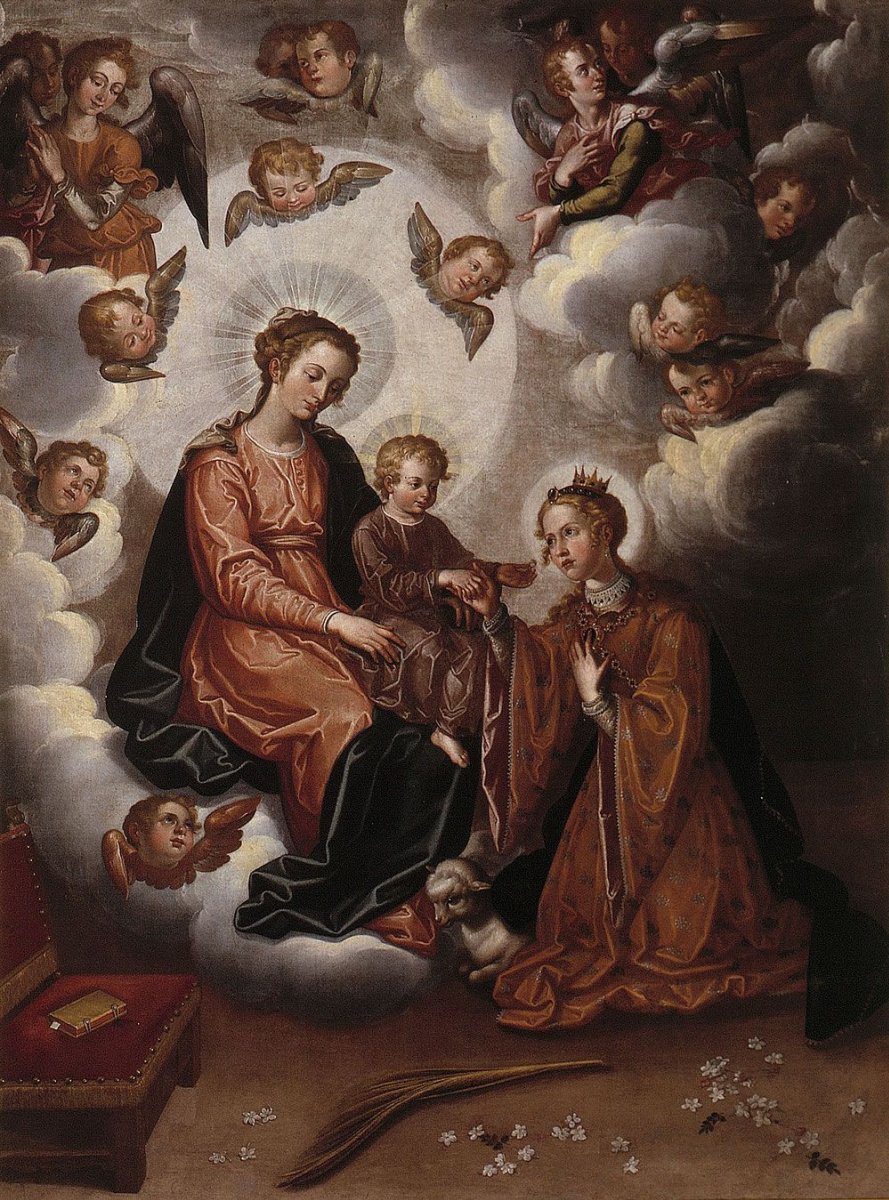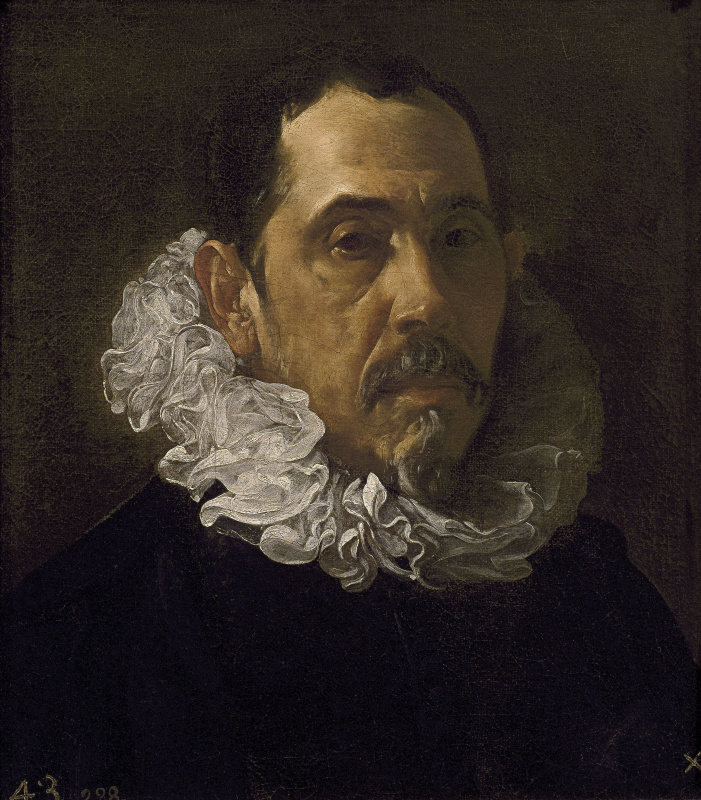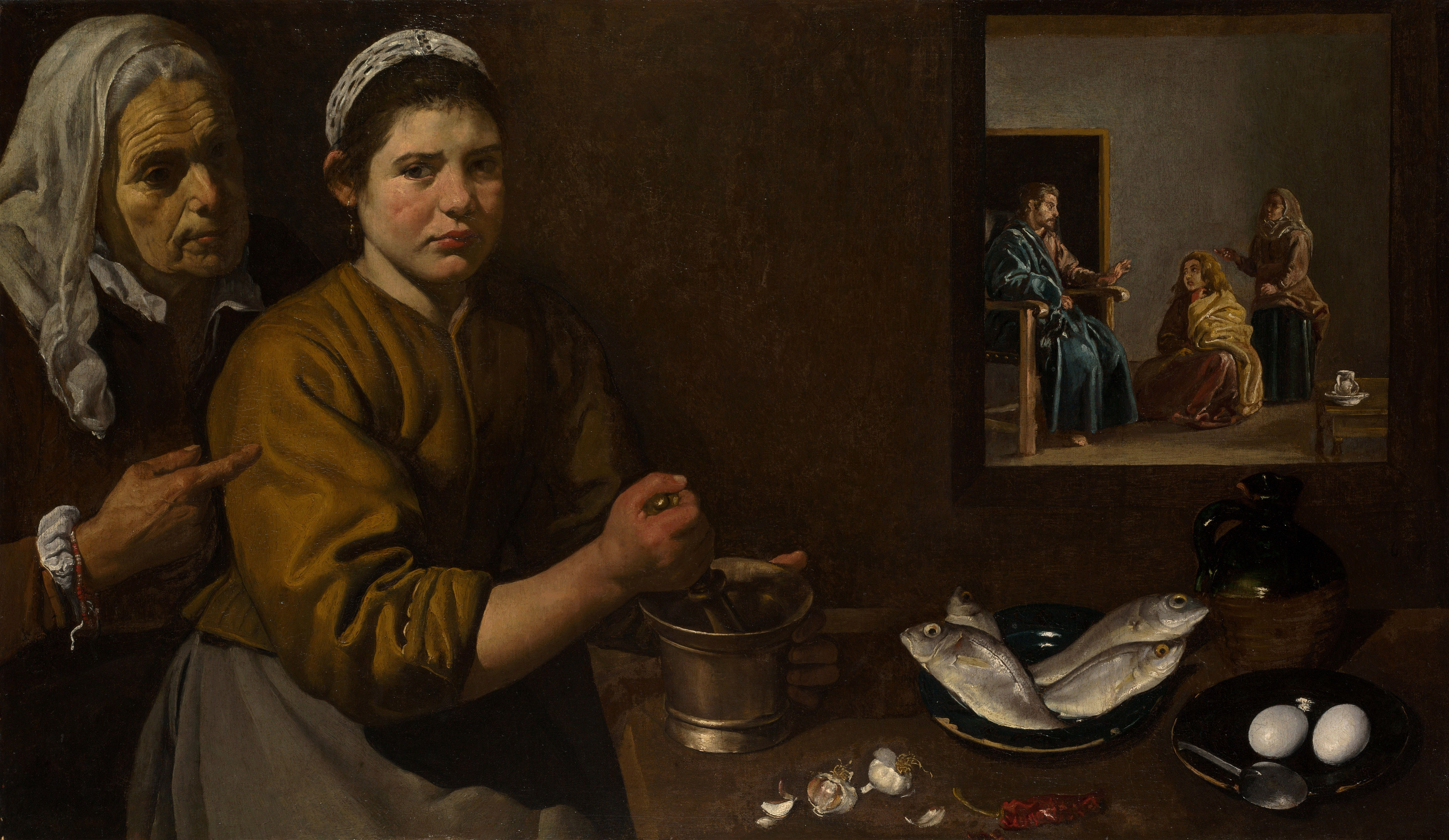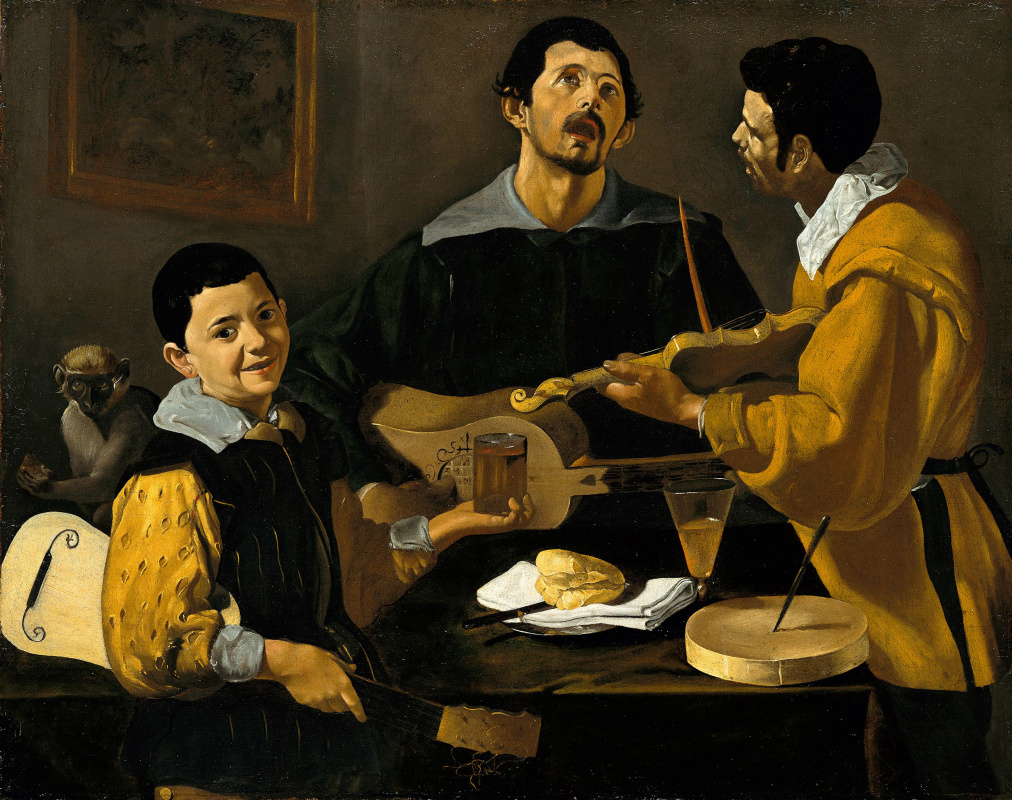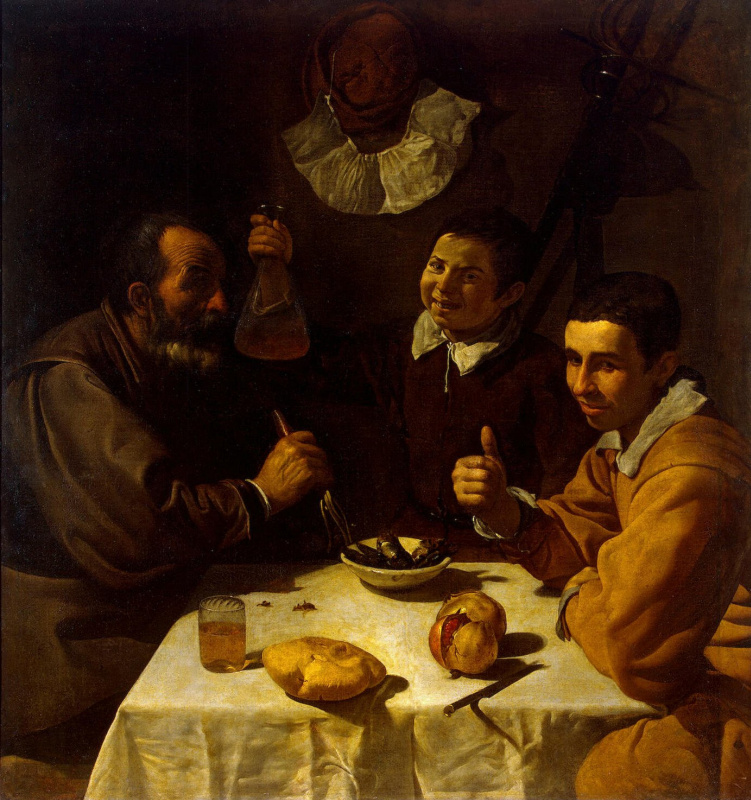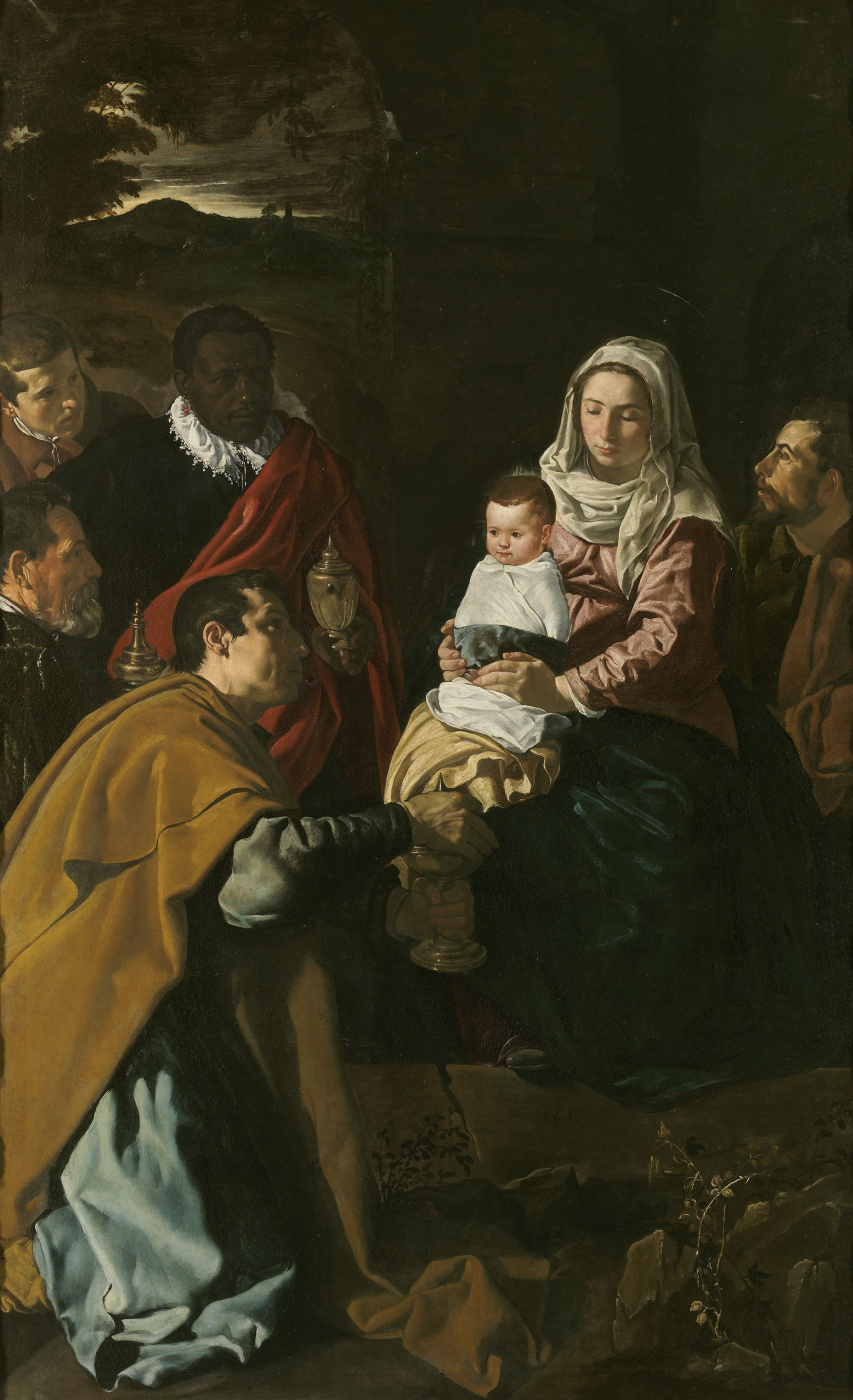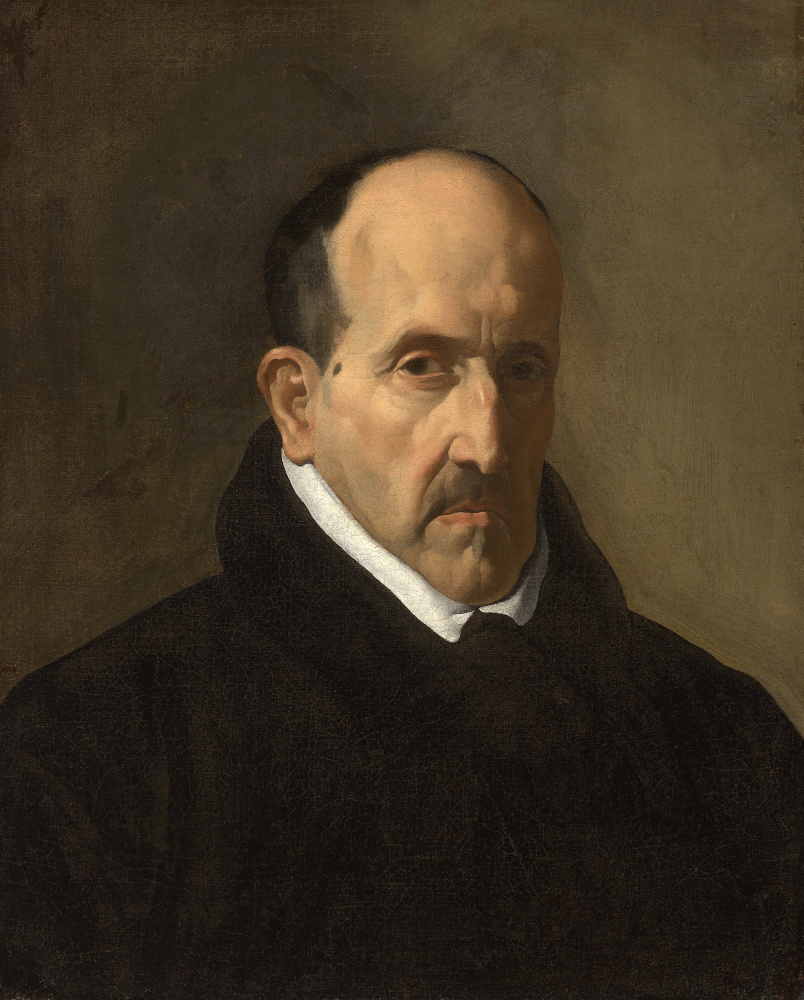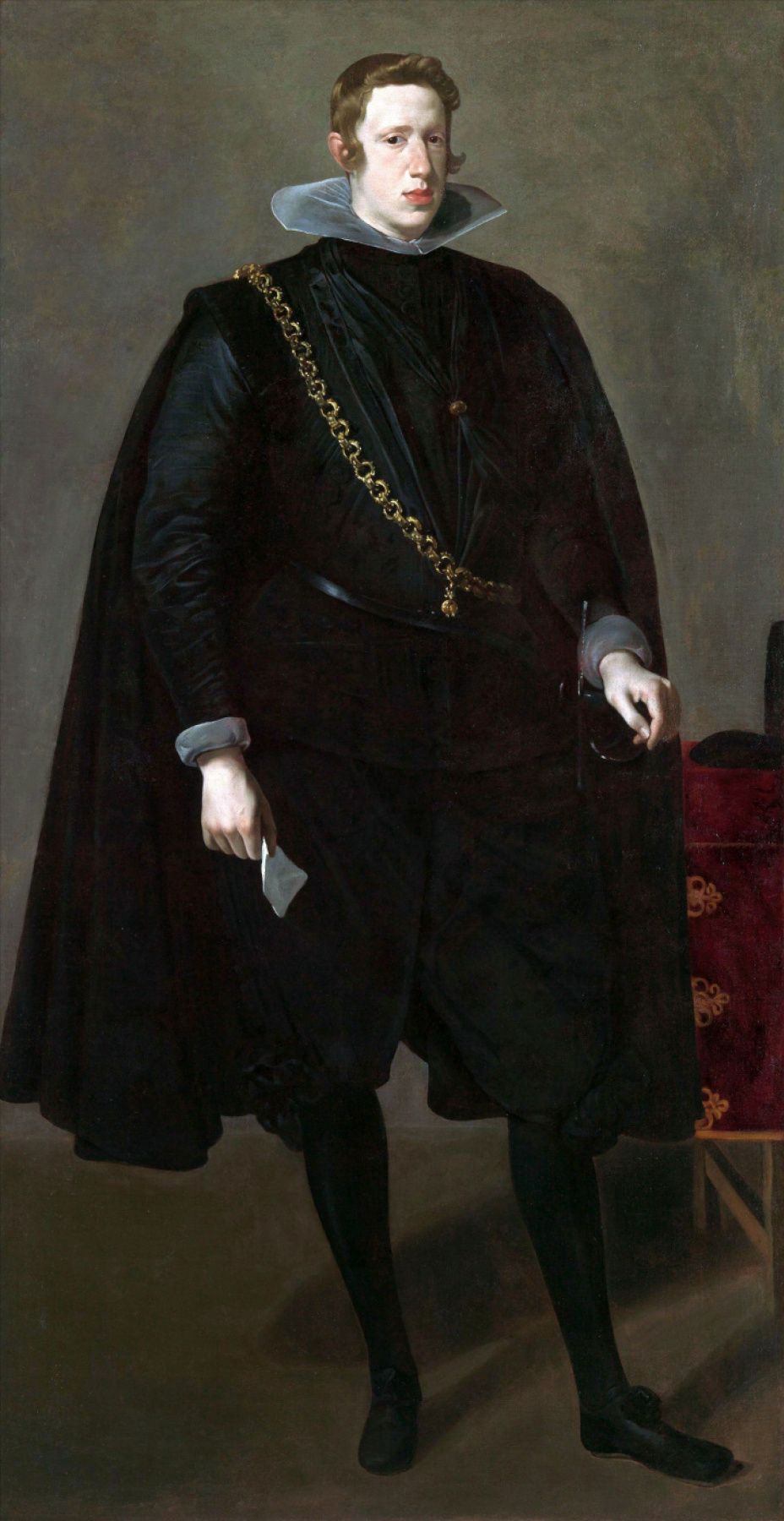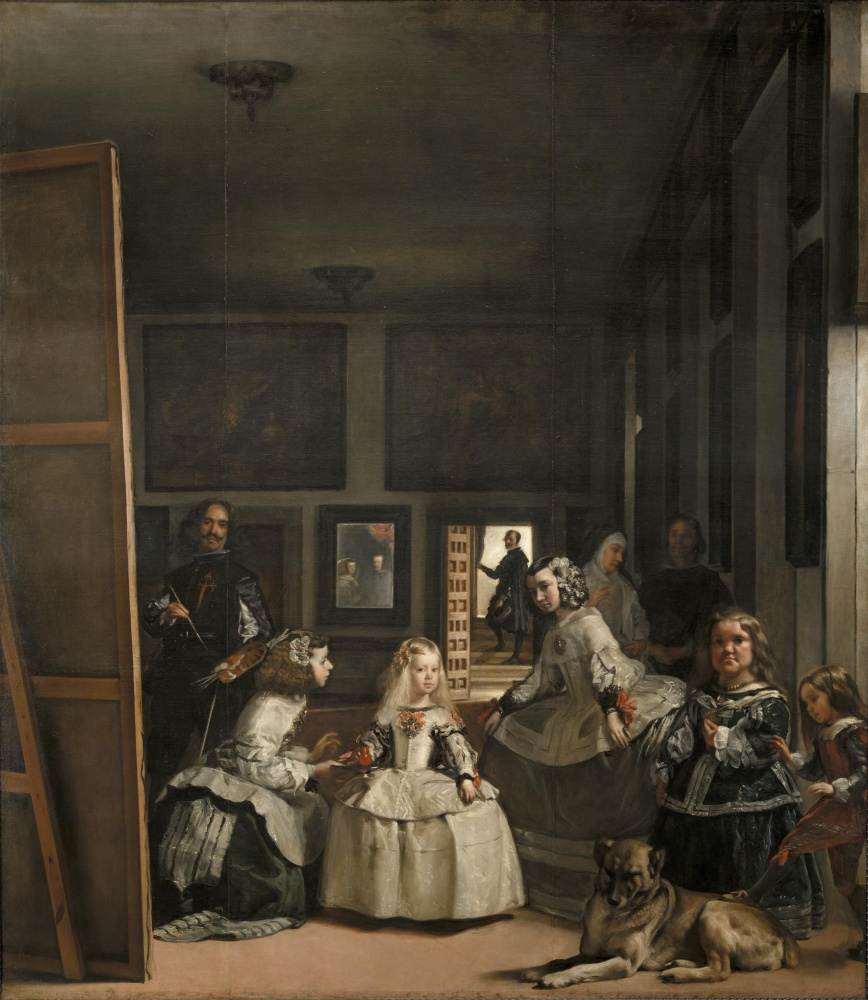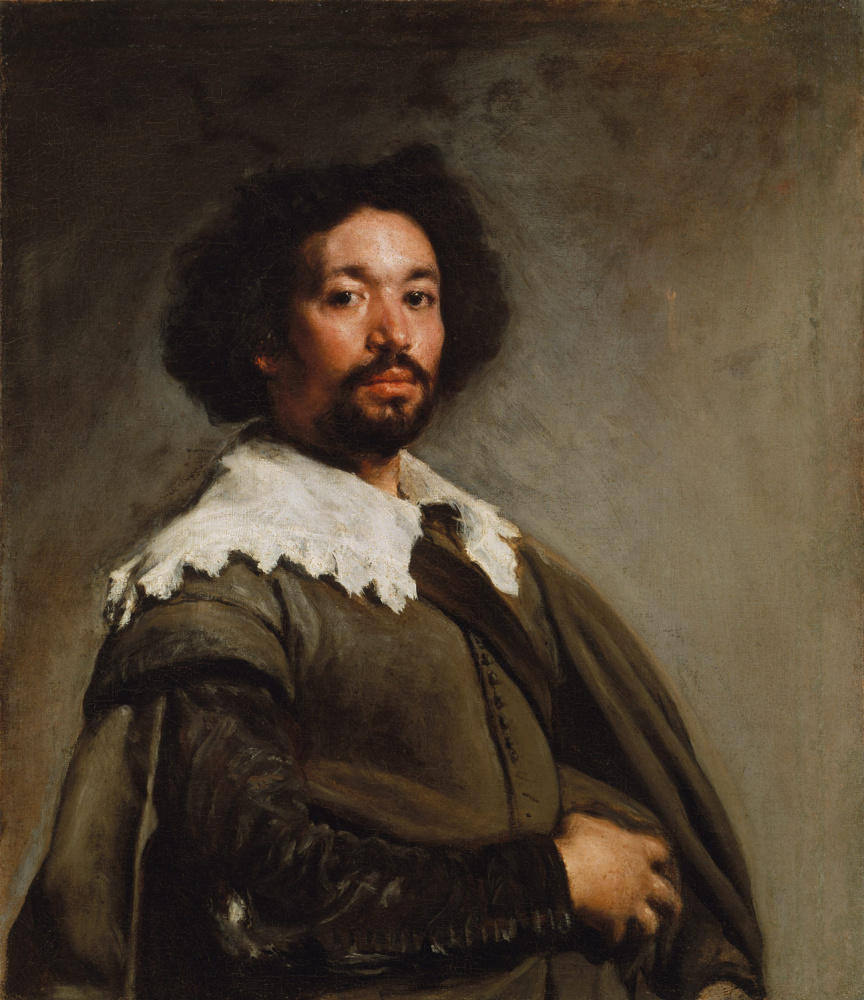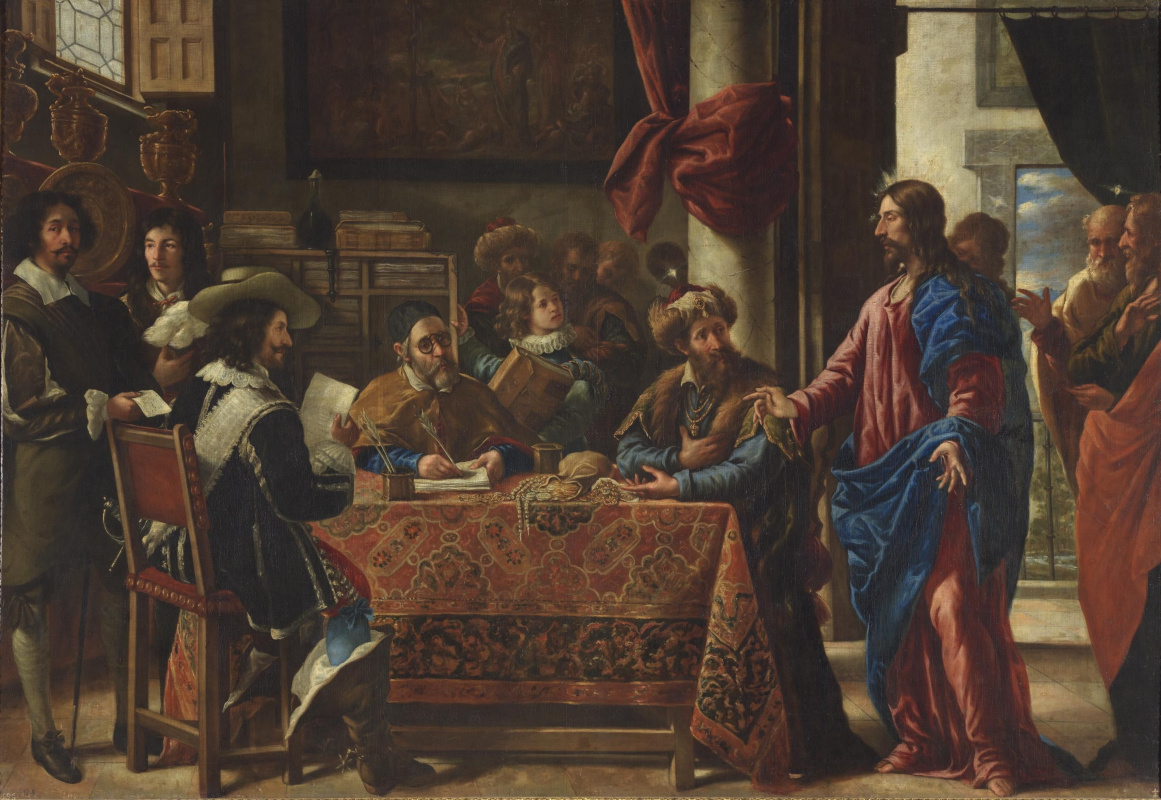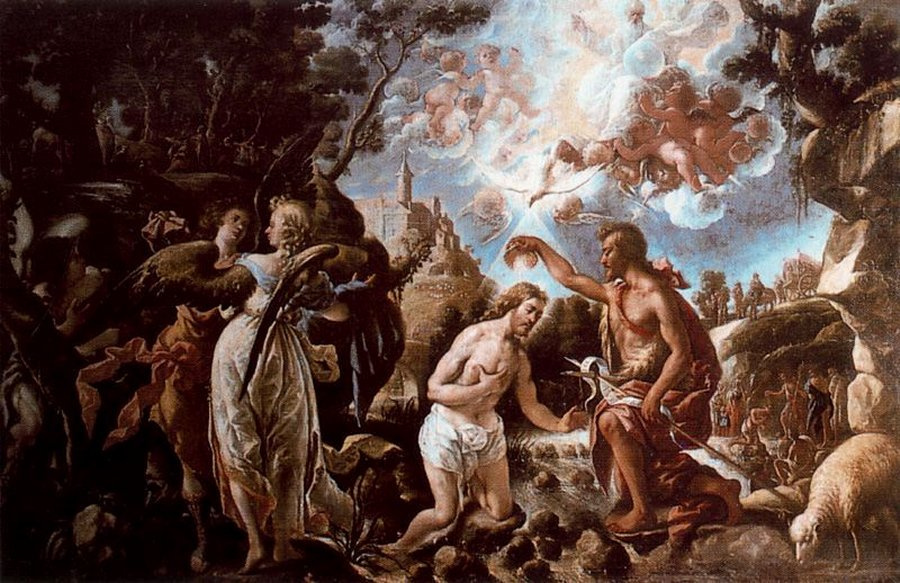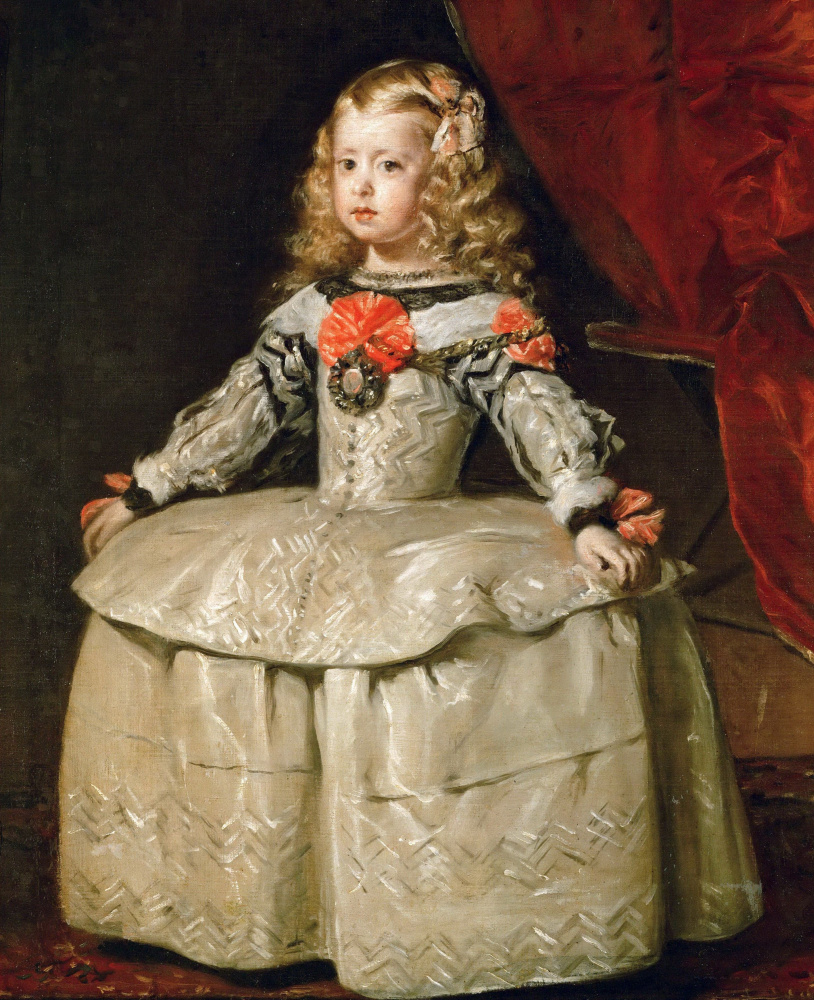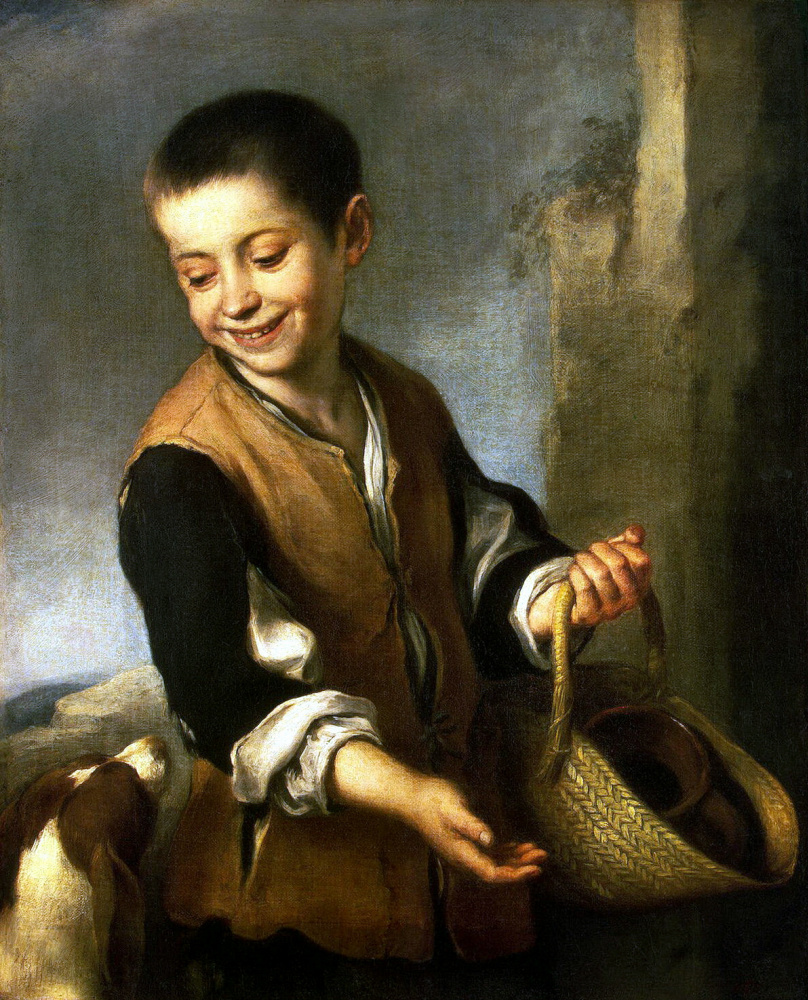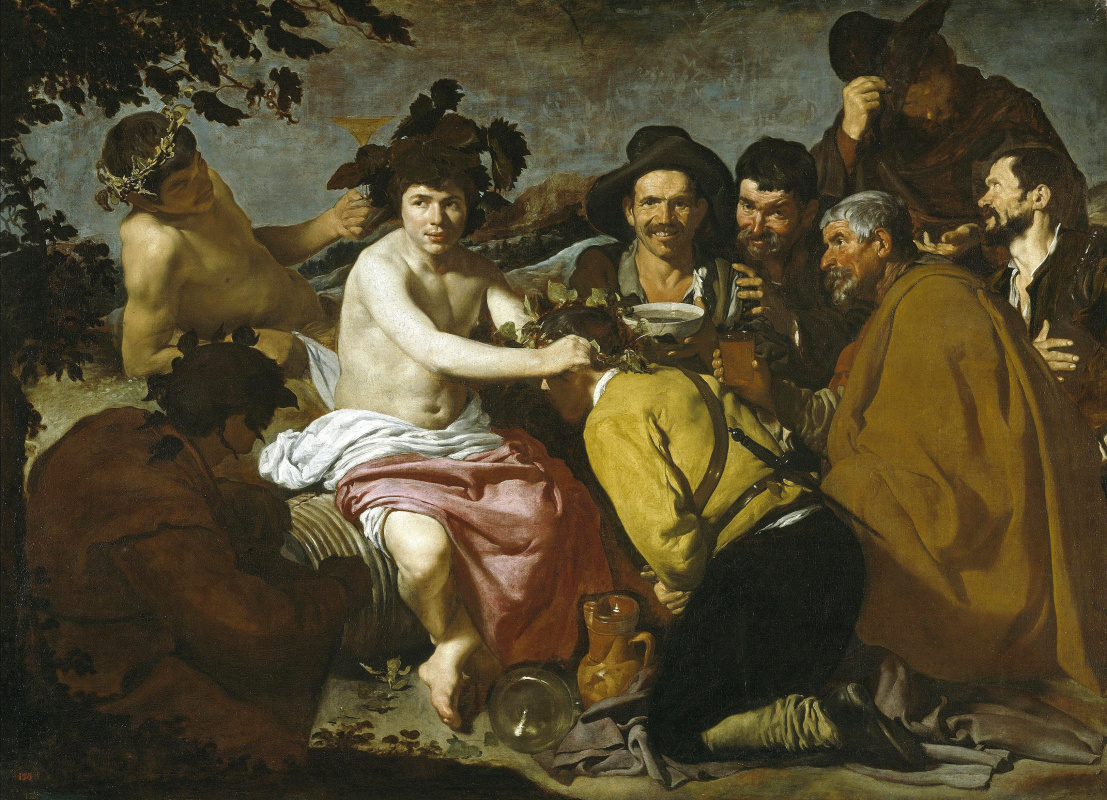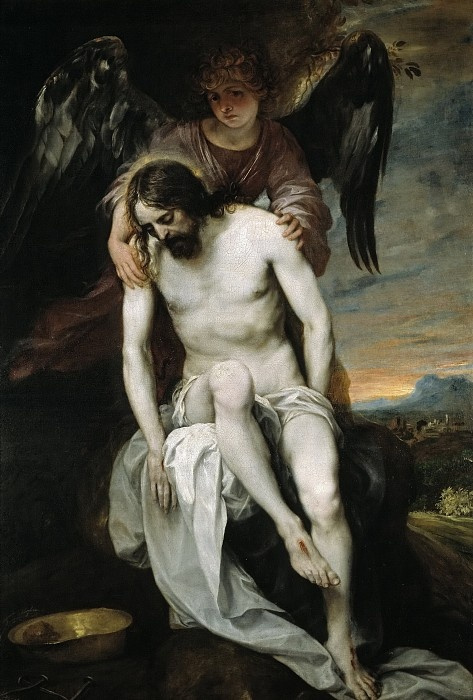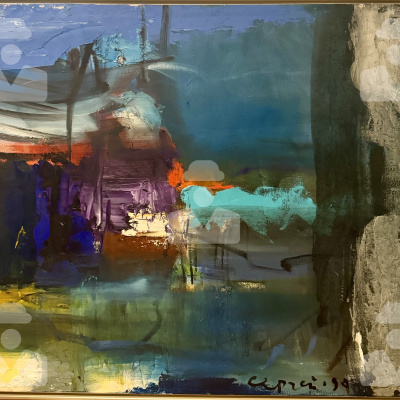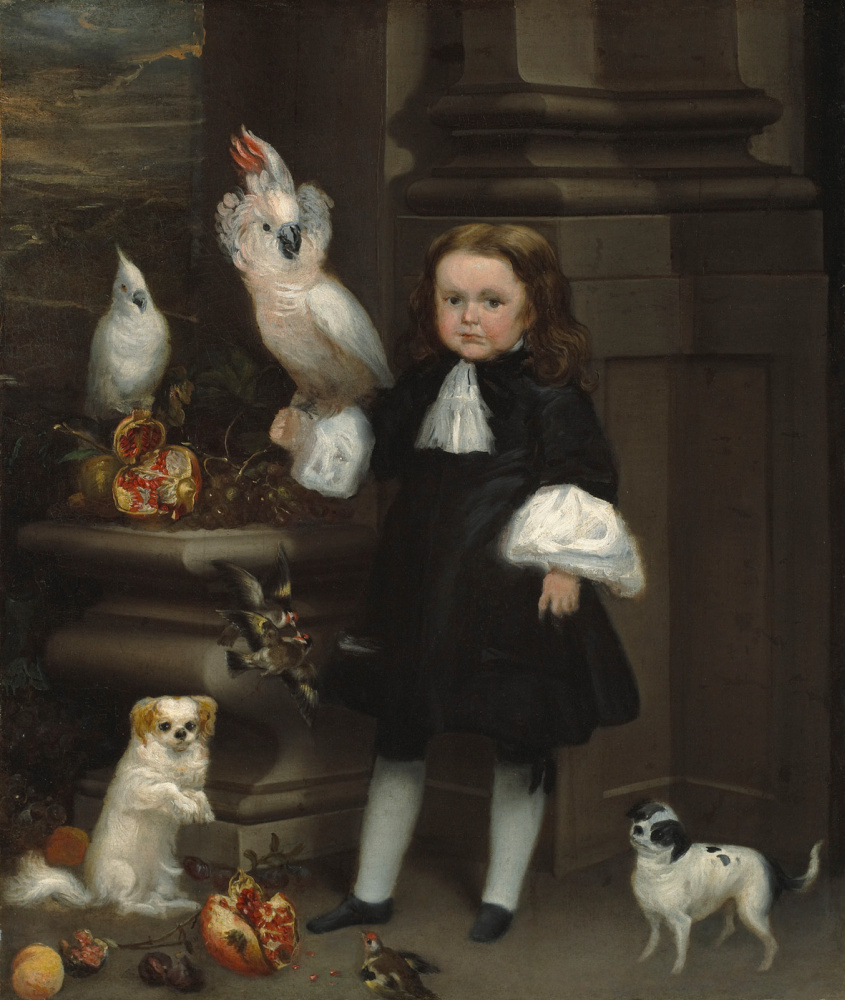Diego Velázquez, the court painter of King Philip IV, was one of the most significant masters of the Golden Age of Spanish painting, and he taught a number of pupils who continued his work. Our today’s story is about the painter of the famous portraits of Infanta Margarita, his son-in-law, his slave and numerous protégés.
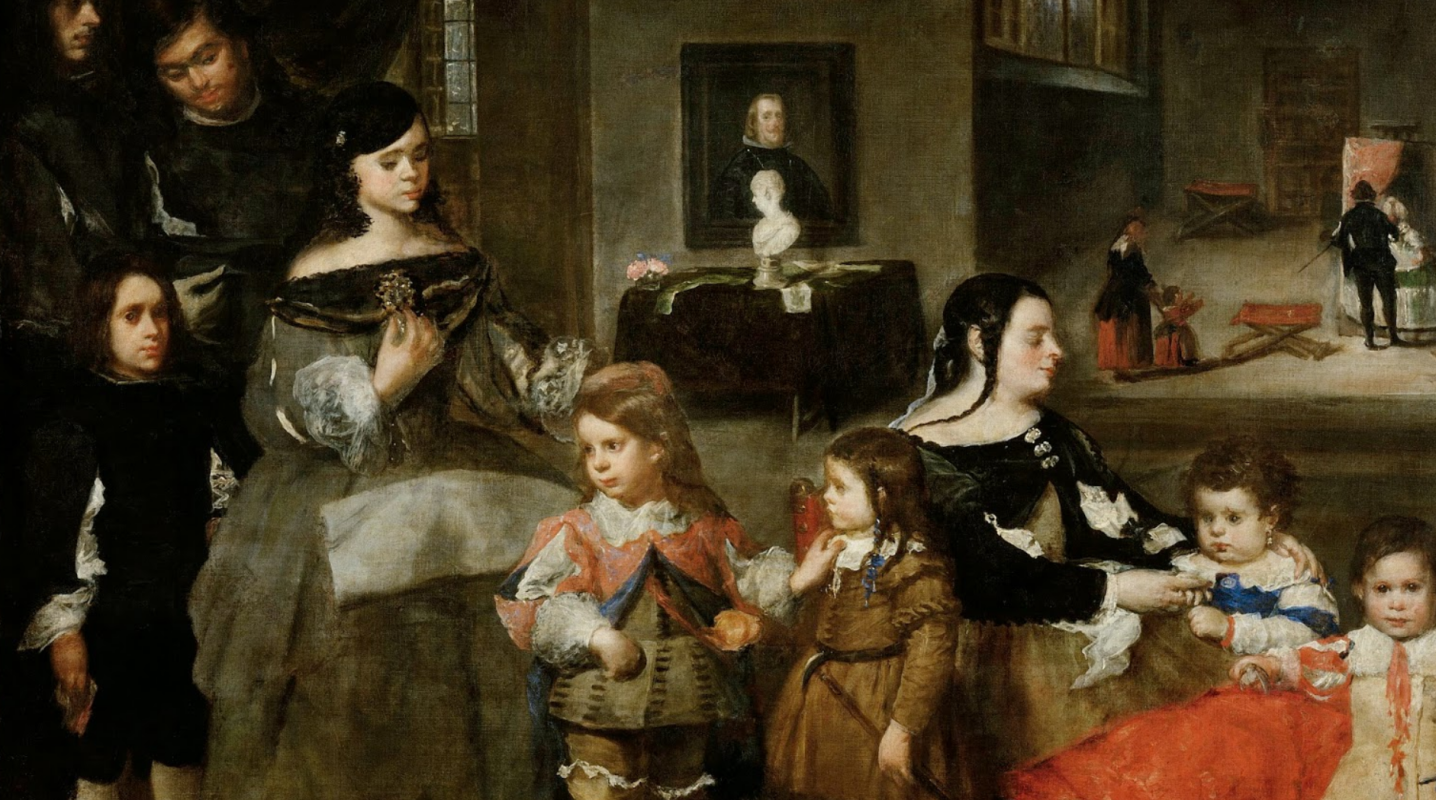
Diego Velázquez was the eldest son in the family of a poor hidalgo. Seeing the boy’s gift for art, his father gave up on the dream of making his son a lawyer or a writer and chose him a career of a painter, letting the child study
under Francisco de Herrera. Flavored with slaps and cuffs, the training did not last long, and in 1611 a new teacher was found — Francisco Pacheco. It was under the guidance of a kind and patient teacher that the outstanding talent of the future master began to flourish.
According to the terms of the contract, the young student was bound to his master, serving him "in everything that he said and ordered that was seemly and possible to do," including grinding paints, washing brushes, mixing varnishes, preparing canvases and assembling canvas stretchers. In turn, the teacher had to provide his student with food, a house and a bed, clothes and shoes, and also teach him art "well and fully, according to all he knew of it, without concealing any part thereof."
According to the terms of the contract, the young student was bound to his master, serving him "in everything that he said and ordered that was seemly and possible to do," including grinding paints, washing brushes, mixing varnishes, preparing canvases and assembling canvas stretchers. In turn, the teacher had to provide his student with food, a house and a bed, clothes and shoes, and also teach him art "well and fully, according to all he knew of it, without concealing any part thereof."
Velázquez quickly proved himself a skilled drawing artist and mastered the art of color rendition, and a close friendship was struck between the teacher and his student, based on mutual respect and recognition. Later Pacheco wrote a book The Art of Painting, in which he stated: "It seems to me that a dressed mannequin, like dead nature, cannot replace living nature. I keep to nature for everything; if everything could be taken from nature, not only the heads, nudes, hands and feet, but also the draperies… it would be much better." It was this (rather revolutionary for his contemporaries and colleagues) style that Pacheco used to teach his students. Velázquez fully embodied his teacher’s worldview in his early bodegón paintings, for which local boys, maids, and visitors of pubs posed.
After leaving the "golden prison of art" in March 1617, Velázquez passed his exams, received the title of master and was accepted into the painters' guild in Seville. A year later, the relations between the teacher and the student reached their pinnacle — Velázquez married Francisco Pacheco’s daughter, which was a kind of a symbol of recognition of the young painter’s flourishing talent. The newly-minted father-in-law emphasized such qualities of his son-in-law as virtue and purity, and he hoped that the man of outstanding intelligence and talent would make the future of his daughter Juana Miranda bright. It should be noted that Pacheco had a lot of options — at the same time with Velázquez, such future "stars" as Francisco de Zurbarán and Alonso Cano served as apprentices under him.
The adoration of the Magi
1619, 204×126.5 cm
It wasn’t long until Velázquez made his first attempt to get into the royal court. His father-in-law turned to his acquaintance, Gaspar de Guzmán of Olivares, a chamber junker of Infante, who made a career and headed the government in 1622. Under the pretext of studying the richest collection of works of art stored in El Escorial, Velázquez went to Madrid. He never got to the audience, but saw the collection. He was greatly impressed by the paintings of Titian, Veronese, Bassano and Tintoretto, and it provided a new impetus to the development of the artist’s work, previously limited by the provincial environment of Seville, which never saw new trends in the artistic life of Europe.
Portrait of Luis de Gongora
1622, 50×40 cm
Two months after his unsuccessful trip, Velázquez received news of the death of the court painter Rodrigo de Villandrando. The desired position was vacant — Velázquez quickly left for the court. The portrait of royal chaplain Luis de Góngora y Argote became his pass to the king. Philip IV expressed his wish to pose for the young artist, and the latter showed himself in the very best light. The young monarch liked Velázquez — as well as his work, and promised him that no other painter would ever paint his portrait. On October 6, 1623, Diego Velázquez became the court painter, living up to the hopes of his teacher Francisco Pacheco.
Portrait of Philip IV
1624, 52×40 cm
Velázquez's career really started taking off, he kept getting new positions at the court. Young Philip IV was into painting and even took drawing lessons himself. He insisted that the workshop of Velázquez was located in the royal palace. A few years after the death of his son, Baltasar Carlos, he ordered that the painter used the main room of the prince’s chambers in the Alcázar of Madrid. There, in the Casa del Tesoro, the monarch had his own chair, in which he often watched his favorite painter at work and talked with him — despite strict palace etiquette.
Portrait of Queen Isabella of Bourbon
1632, 132×101.5 cm
The king had his own key to the workshop and could go there at any time. Perhaps it was because of that "secluded spot" that Philip’s first wife, Élisabeth de Bourbon, wasn’t really fond of the court painter.
Velázquez's workshop always stayed at the royal palace. It is this hall of the former palace museum that is depicted in the famous Las Meninas by Velázquez.
Velázquez's slave
In 1623, when Velázquez got the approval of the royal court and was going to set out to Madrid, he was presented with a young slave of Moorish descent, Juan de Pareja (1606 — 1670). The bright young man, who had a mild nature, ingenuity and amiability, became a servant in the artist’s house. When Juan turned 17 years old, his gracious master made him his assistant in the workshop. Pareja’s duties included keeping everything clean and tidy, buying the necessary materials in time, and grinding paints. The talented servant not only run the workshop — year after year, he watched his master at work, studied the techniques of drawing and painting, and finally began making his own sketches.Over the years, the trust between the artist and his assistant grew; Juan became Velázquez's loyal and constant companion in carrying out commissions by members of the royal family. For example, de Pareja accompanied Velázquez on his trip to Rome in 1650, when the artist had to buy works of art for royal collections and negotiated with prominent personalities who wanted to be portrayed by the famous painter. One can only imagine de Pareja’s excitement, when Don Diego suggested (while in Rome) to paint his portrait; the picture can be seen in the Metropolitan Museum of Art in New York. According to the artist’s biographer, Antonio Palomino, the painting "gained such universal applause that in the opinion of all the painters of the different nations everything else seemed like painting but this alone like truth."
Portrait of Juan de Pareja
1650, 81.3×69.9 cm
However, the creation of de Pareja’s portrait had a practical purpose. Having returned to Italy at the age of 50, Velázquez quickly realized that no one there could be impressed by his former merits. The Italians, who proclaimed their homeland as God’s Abode and the cradle of art, did not really believe in the ability of foreign "barbarians" to create something worthwhile. Legend has it that Velázquez's pride was deeply hurt, and in just a few days, while in Rome, he made a beautiful portrait of the servant who accompanied him — the Moor, Juan de Pareja. As soon as the last layer of lacquer had dried on the portrait, the Moor, along with the portrait, went to the residences of the noble Romans. This idea turned out to be successful: seeing the definite similarity between the image and the model, as well as the high dignity the artist enriched the portrait of his slave with, the Italians had no choice but to recognize Velázquez's skill. Thanks to the portrait of the Moor, the artist got a commission to paint Pope Innocent X — one of the most influential people not only in Italy, but also in the whole Europe.
There are two versions of how de Pareja’s artistic talent was discovered. According to the first one, it happened by chance when Philip IV and Velázquez discovered one of Juan’s paintings in the workshop. According to the second one, when Philip came to the workshop, de Pareja showed him one of his own paintings and cried, begging the king to prevail upon Velázquez to grant him his freedom. One way or another, but the same year he made a portrait of his servant, 1950 (according to other sources, 1654) Velázquez signed an act that granted Juan freedom. Until the end of his life, de Pareja remained loyal to Velázquez's family, and after the artist’s death continued to work in the workshop of his former master’s son-in-law, Juan del Mazo.
The calling of St. Matthew
1670, 225×325 cm
Having developed his skills, de Pareja not only became an excellent copyist, but also created his own works, including those on religious themes, and portraits. The relationship between the famous painter and his servant formed the basis for the book El esclavo de Velázquez (The slave of Velázquez, 2014), written by famous Spanish art historian Fernando Villaverde.
Baptism of Christ
1667
Velázquez's son-in-law
Being the first court painter, Velázquez had a right to choose students and assistants on his own. In 1631, Juan Bautista Martínez del Mazo entered his workshop. The whereabouts of del Mazo’s training remain a mystery. The date and place of his birth are also uncertain: apparently, the artist was born not in 1612, but in 1605, and at the time of his meeting with Velázquez he was 26 years old. In just two years, Velázquez let his student marry his fifteen-year-old daughter Francisca. Keeping in mind how the artists of that time treated marriage, it can be said without prejudice that the father chose his most talented student for his daughter. The luxurious wedding ceremony was held on August 21, 1633, at the Church of Santiago in Madrid and visited by King Philip IV himself. A year later, Velázquez transferred to his son-in-law his position of Usher of the King’s Chamber, securing that the del Mazo family was wealthy.
Portrait of Infante Don Balthazar Carlos
1635, 144×109.3 cm
We are well aware of the artist’s further fate, but it’s far more complicated when it comes to his paintings. Being Velázquez's closest student and right-hand man, del Mazo actively participated in creating paintings of his teacher, often made copies of his works and rarely signed his own ones. This to this day causes a great confusion in distinguishing the works made by del Mazo and those by Velázquez, and disputes over the attribution of some of the paintings continue to simmer even now.
Portrait of the Infanta Margarita in a white dress
1656, 105×88 cm
According to Alexandre Benois, "del Mazo, who was just an assistant to the great master, an artist who lived together with Velázquez (thanks to his marriage to the painter’s daughter), used each, even the most imperceptible, of his methods and was thoroughly imbued with his artistic ideas." And further: "Velázquez and Mazo are not two artists, but two hands, governed by one mind, one will, and one knowledge."

Juan Bautista Martínez del Mazo. Portrait of the Artist’s Family. 1659
Francisca de Silva Velázquez y Pacheco, del Mazo’s first wife, gave him five children and died in childbirth in 1658. Some time later, the artist married Francisca de La Vega; they had four sons. It was the artist’s second wife and their kids who posed for del Mazo’s painting The Family of the Painter — one of his most famous works, a kind of tribute to Velázquez and his Las Meninas. The four left-most figures are most likely to be Diego Velázquez's grandsons. After the death of his second wife, del Mazo married her relative, Ana de la Vega.
Velázquez's protégé
Technically, Bartolomé Esteban Murillo (1618 -1682) was not Velázquez's student, although the influence of the master’s paintings on his work can definitely be observed. It is known that Murillo began his art studies under Juan del Castillo, and he was originally influenced by his teacher’s dry and quite tough manner of painting. In search of new horizons, Murillo decided to visit Madrid. Velázquez bid his fellow countryman welcome and made it possible for him to visit the treasury of El Escorial. Like Velázquez, Murillo studied and copied works by Titian, Rubens, Ribera and van Dyck, often visited his patron’s workshop and learned his free painting technique, bringing the realism of Velázquez into his further work. It is interesting that many years later, following in Velázquez's footsteps, Murillo freed a slave who had lived in his family for a long time.
Boy with a dog
1655, 70×60 cm
It looks like Velázquez became for Murillo the same opportunity to develop his naturalistic passions and come up with a new technique, which for Velázquez was the meeting with Rubens. It happened in 1628 — Rubens came to visit the Spanish court and persuaded Velázquez to visit Italy in order to fill his imagination with new impressions. After seeing Venice and the Vatican, Velázquez made his paints more transparent, he was more relaxed when using his brush, he no longer painted dark backgrounds, and he did not pay too much attention to detail. His painting The Triumph of Bacchus reflects that "new" Velázquez (not without a shadow of Caravaggio behind his back — just look at the image of Bacchus!). The artist learned to convey visual impressions of the human eye, mastered the art, which was then forgotten after his death and brought back only by the Impressionists two hundred years later. Moreover, when working at the court, he influenced the tastes of the Spanish nobles, who were extremely fond of his paintings. Getting back to Murillo, meeting Velázquez made him a wonderful colorist and master of chiaroscuro.
The Triumph Of Bacchus (The Drunkards)
1629, 165×225 cm
Murillo’s transition from complete obscurity to great fame was so dramatic that it made people in Seville come up with a legend of his voyage to Madrid. To make the story more convincing, they claimed that on that very day when Murillo was born in Seville, Velázquez got married in Madrid, which was believed to be a sign. Although this story is plausible and could really explain a lot in the evolution of the artist, there is not a single document that would confirm it. The researchers tend to think that in fact Murillo never left Seville.
Velázquez's list of colleagues also included his former fellow apprentice under Francisco Pacheco — Alonso Cano (1601 — 1667). Cano was more of a sculptor well-grounded in architecture rather than a painter. In 1638, Cano became one of the court painters to the Count-Duke Olivares (aided by Velázquez, of course). Even though Cano’s art was definitely influenced by the naturalistic realism
of Velázquez, the artist has preserved his own individual style of painting. The masters were friends for many years.
Christ supported by an angel
1652, 119.8×178.3 cm
Another protege of Velázquez was Juan Carreño de Miranda (1614 — 1685). He gained fame in 1650, when, thanks to Velázquez, got the commission to paint frescoes in the Salon de los Espejos in the royal palace. In 1669, when Velazquez’s son-in-law, del Mazo, died, Miranda became a court painter, and two years later, was appointed main court painter to King Carlos II.
Portrait of the Dwarf Michol
1680, 140×102 cm
Some researchers put such masters as Juan de Alfaro, Francisco de Palacios, José Leonardo, and some others on the list of Velázquez's students. It is possible that these artists worked in Velázquez's workshop at the court, helping him to carry out numerous artistic tasks related to designing royal residences. Velázquez did not adhere to classical ways of teaching; neither did he implant ideological principles. The assistants worked alongside their master, improving their technique, developing skills and talent under his guidance. After that, they left the workshop and were replaced by new painters.






